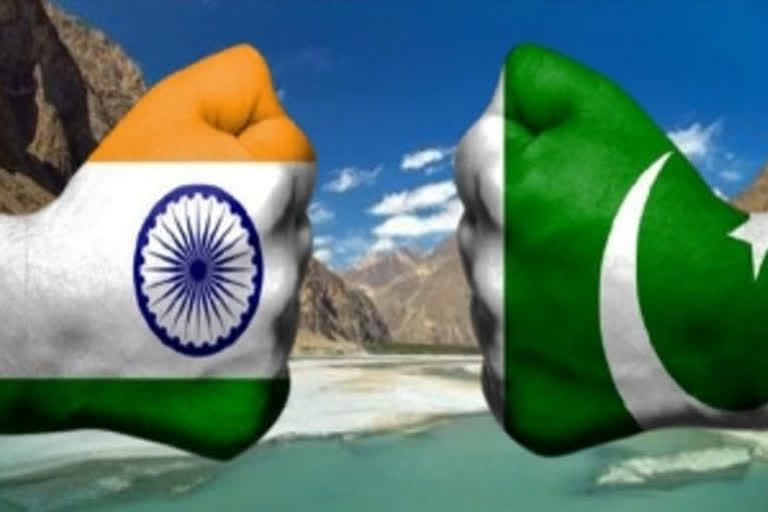Hyderabad: Consensus over respecting the renewed ceasefire, an agreement which was signed by both India and Pakistan in November 2003, is significant in the backdrop of growing fissures between Hurriyat and Pakistan and the de-escalation process at the LAC.
Till last week there has been no let-up in the border skirmishes particularly after the BJP formed the government in 2014. It would, in fact, aggravate more on the occasions when a country wants to make a statement or would like to show displeasure over any act, assuming, it wouldn’t suit to their state policy.
August 5 decision by the Indian parliament which did not go well with Pakistan came down heavily on people living along the ceasefire line as they had to face reverberation of guns and mortars contentiously for weeks and months.
The ceasefire line is also known as a Line of Control (LoC) bifurcating Jammu and Kashmir into two, one on this side and the other occupied by Pakistan remains sporadically violent thus reflects CFV as a means of political gesturing of the two sides.
If one side is to show resentment towards the other it is the Ceasefire Violation which is a manifestation of the disagreement.
READ:Why India-Pak 'surprise' ceasefire pact was no surprise
Guns fell silent after the renewal of the ceasefire agreement which came into effect on 24th February. The silence on the LoC earlier would come as a bad omen because it would not long last and would throw surprises by abrupt shelling and subsequent firing. Melting of snow or seasons before the snowfall would throw tracks open for militants.
A flock of militants entering into Jammu and Kashmir wouldn’t happen unless there is an exchange of fire between the two forward posts- Pakistan and India. It is also a known fact that militants would attempt to make entry into the Jammu and Kashmir only when there is a cover fire aimed at engaging the Indian troops till the group crosses over to this side.
But the fresh truce would make a huge difference in the infiltration attempts. In fact, army chief Narvane’s statement on 25th February talks a lot about how both the countries have, through back-channel diplomacy, agreed to put either the end to militancy or bringing it to the lowest possible ebb.
READ:Sino-India disengagement process in eastern Ladakh complete, says Rajnath Singh
Army chief welcomed the ceasefire agreement and said that the operations against the militants will continue, meaning there will be no exit for them. It is actually the ceasefire line that facilitates exit and entry of militants and if the exchange of fire stops there is hardly any possibility left for any support to exfiltration or infiltration from across.
This is a major shift in Pakistan’s policy towards Kashmir which they always claimed is their core issue. Militants like Yousuf Shah code-named Syed Salahuddin, the chief of umbrella group United Jehad Council are going to have a tough time ahead. A note of caution has already gone to Hurriyat chief Syed Ali Shah Geelani, key support from Syed Salahudin ideology after he showed displeasure over the agreement.
Special Committee of the Parliament on Kashmir has snubbed Geelani for his criticism and scepticism which he has shown through a letter sent to Pakistan over the ceasefire agreement with India.
For Pakistan, getting out of the grey list of FATF is the top priority and for that, they will have to follow the framework religiously. Border violence and support to militancy does not fit in the framework. It is Kashmir’s militancy that is primarily a cause for Pakistan to remain in the Greylist. This ceasefire is going to benefit Pakistan in many ways.
READ:Restoration of trust between India, China will take time: Defence analyst
Apart from the FATF, another thing that is going to benefit Pakistan and China is to have activity on the CPEC without any noise. India may not speak much about Gilgit Baltistan which Pakistan has already made its fifth province by making some major constitutional changes. The agreement is also going to allow the seamless activity of China’s flagship project, the BRI, passing through the region.
India on the contrary is going to have all the developmental projects in Jammu and Kashmir without any distraction as there would not be any disturbance from across if the renewed ceasefire agreement lasts long.
Now the only challenge for India is to manage the mainstream political leadership and for Pakistan to handle the separatist leadership. On one side there is a growing indigenous militancy and on the other hand, mainstream leadership going the separatist way is what is going to throw a big challenge for India and Pakistan both.
READ:Also Read: Only lip service from Pakistan on terror: Expert
It would be interesting to see whether the Modi government will continue to use the iron fist to deal with the idea of separatism or Pakistan’s indifference will get them to adopt a dormant mode.
